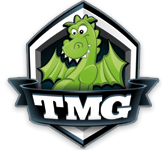Blast from the past - Starry Night
Poking through the archives of the old Board Game Designers Forum, I came across some old gems, some of which I had no recollection of! For example, here's my entry to the March 2008 Game Design Showdown, which seems like it could be pretty easy to make:
Entry #14 - Starry Night
by sedjtroll
2-8 players
30 minutes
Ages 6 and up
Starry Night is a game of finding constellations in the night sky. It is played with a deck of Constellation cards, and 36 custom 6-sided Skyscape dice.
The dice, when rolled and then grouped into a 6x6 grid, show a starry skyscape in which constellations can be found. When all players are ready, the first Constellation card is flipped and all players try to find the constellation in the skyscape grid. Upon finding the correct pattern of stars, a player calls "Eureka!" and then points out the constellation to the other players. If correct, that player wins the Constellation card and the next one is revealed. When all Constellation cards have been exhausted, the player who has found the most constellations is the winner!
There may be a constellation which does not appear in the skyscape grid. If all players agree that the constellation cannot be found, set it aside and move to the next card - nobody scores for set aside constellations. Not even if the skipped constellations are found later.
For more fun, re-roll the Skyscape dice, shuffle the Constellation cards, and begin again!
I think custom dice would be the way to go here. Imagine the die faces divided into quarters, where each quarter could either have a dot (a star) in it or not. A die would probably have 2 faces with 1 star, 2 faces with 2 stars, and 1 face each with 3 and 4 stars... something similar to that for distribution. Rolling these dice and grouping them into a 4x4 or 6x6 square will create an 8x8 or 12x12 grid of space where each square either does or does not have a star.
Goal cards with 'constellations' pictured would be turned up, and that pattern of stars is what you're looking for. I don't think the blank spaces in the constellation would have to be blank in the "sky" as well or it may be too hard to find them. As long as there are dots (stars) in the right places, that's good enough to count.




No comments:
Post a Comment